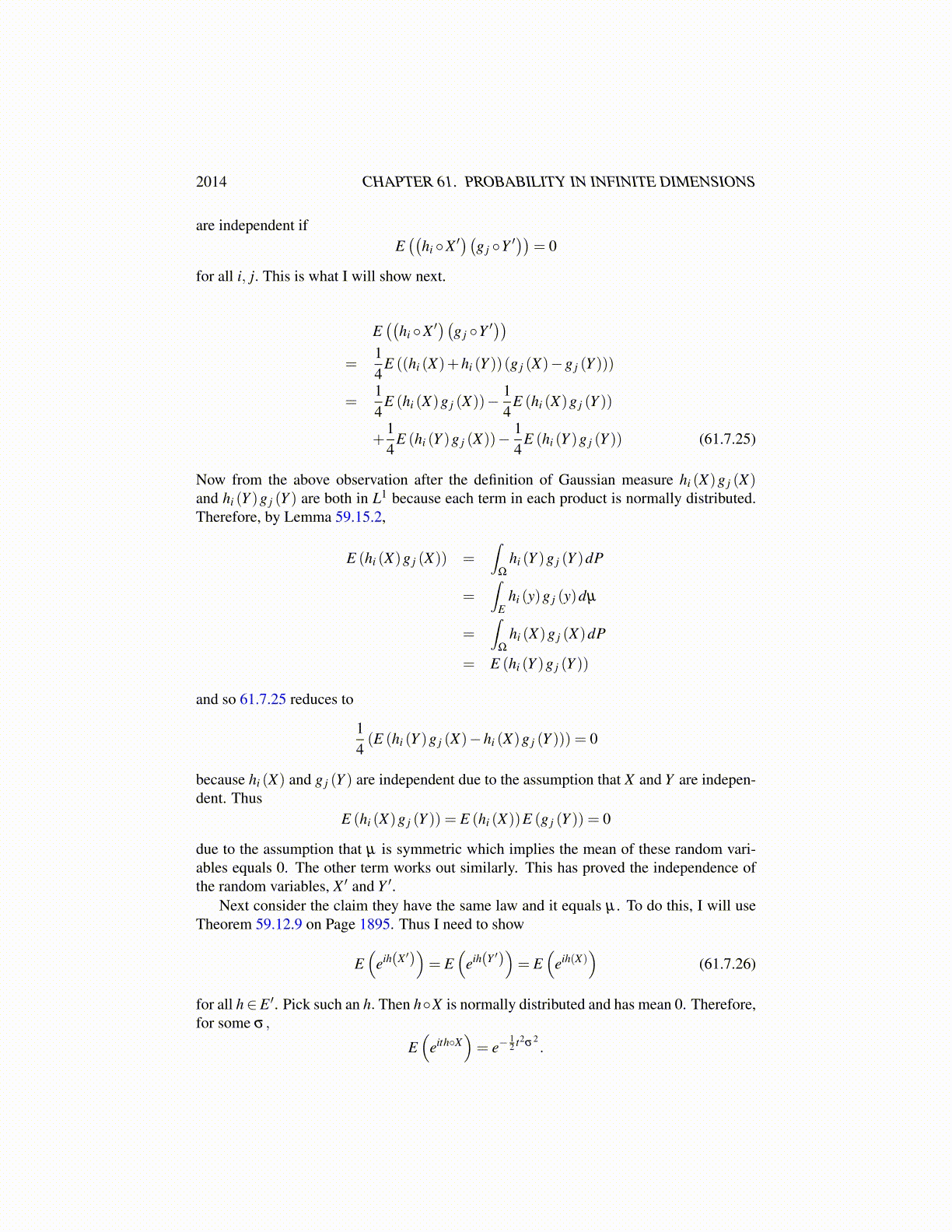
2014 CHAPTER 61. PROBABILITY IN INFINITE DIMENSIONS
for some m and σ2 showing that h◦X is normally distributed.Next suppose h ◦ X is normally distributed whenever h ∈ E ′ and L (X) = µ. Then
letting F be a Borel set in R, I need to verify
µ(h−1 (F)
)=
1√2πσ
∫F
e−|x−m|2
2σ2 dx.
However, this is easy because
µ(h−1 (F)
)= P
(X−1 (h−1 (F)
))= P
((h◦X)−1 (F)
)which is given to equal
1√2πσ
∫F
e−|x−m|2
2σ2 dx
for some m and σ2. This proves the lemma.Here is another important observation. Suppose X is as just described, a random vari-
able having values in E such that L (X) = µ and suppose h1, · · · ,hn are each in E ′. Thenfor scalars, t1, · · · , tn,
t1h1 ◦X + · · ·+ tnhn ◦X
= (t1h1 + · · ·+ tnhn)◦X
and this last is assumed to be normally distributed because (t1h1 + · · ·+ tnhn) ∈ E ′. There-fore, by Theorem 61.6.4
(h1 ◦X , · · · ,hn ◦X)
is distributed as a multivariate normal.Obviously there exist examples of Gaussian measures defined on E, a Banach space.
Here is why. Let ξ be a random variable defined on a probability space, (Ω,F ,P) which isnormally distributed with mean 0 and variance σ2. Then let X (ω)≡ ξ (ω)e where e ∈ E.Then let µ ≡L (X) . For A a Borel set of R and h ∈ E ′,
µ ([h(x) ∈ A]) ≡ P([X (ω) ∈ [x : h(x) ∈ A]])
= P([h◦X ∈ A]) = P([ξ (ω)h(e) ∈ A])
=1
|h(e)|σ√
2π
∫A
e− 1
2|h(e)|2σ2 x2
dx
because h(e)ξ is a random variable which has variance |h(e)|2 σ2 and mean 0. Thus µ isindeed a Gaussian measure. Similarly, one can consider finite sums of the form
n
∑i=1
ξ i (ω)ei
where the ξ i are independent normal random variables having mean 0 for convenience.However, this is a rather trivial case.